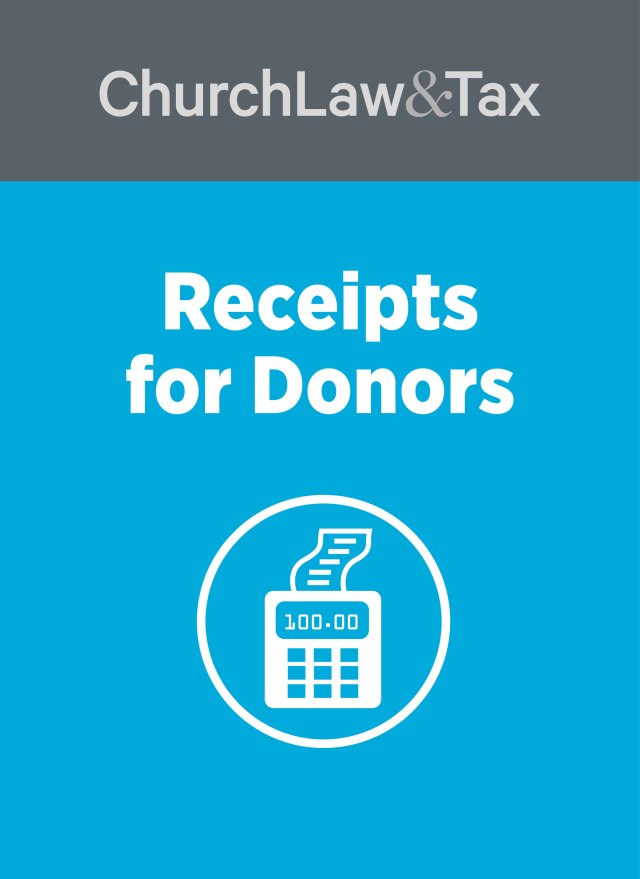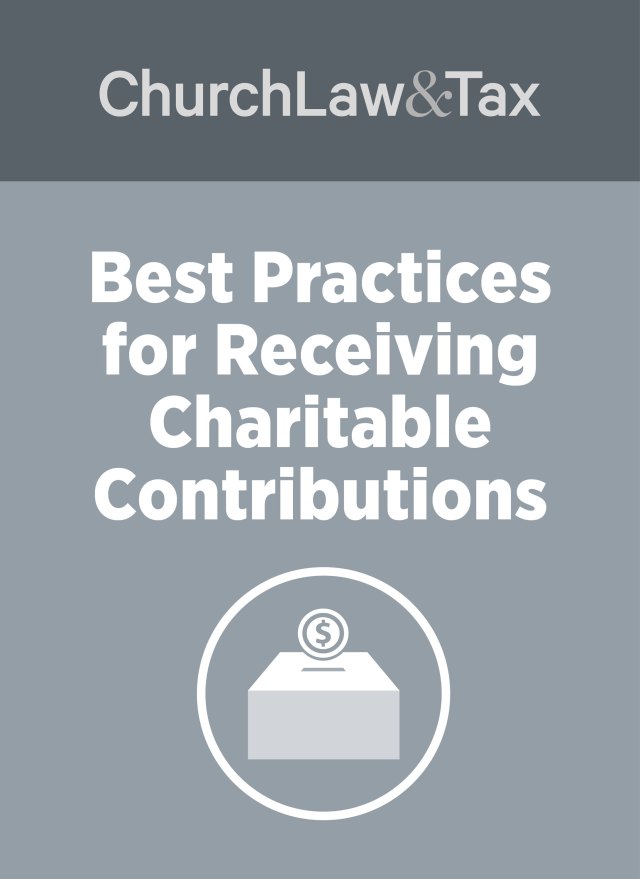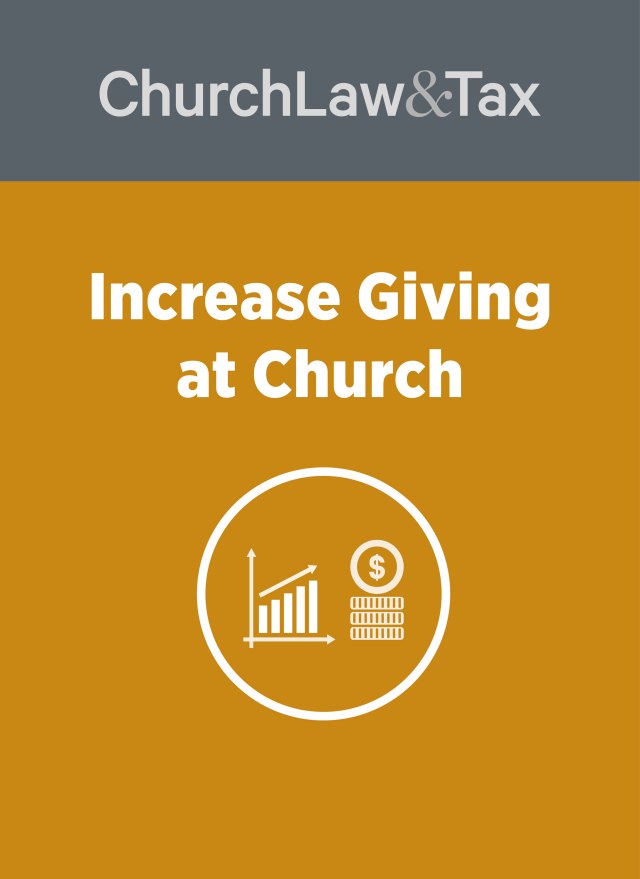Background. Church treasurers occasionally are asked to return a charitable contribution. In some cases, the request comes directly from the donor. In other cases, the request comes from a bankruptcy trustee. This article will review both kinds of requests, and provide church treasurers with guidance on how to respond.
Key point. Church treasurers must not treat donors’ requests for a return of their contributions as simply a “public relations” matter. There are legal and tax issues that must be addressed in addition to any desire to “keep donors happy.”
Requests from donors. Have you ever had a donor ask you to return a contribution? Many church treasurers have had this experience, and have not known how to respond. You should be familiar with the following rules:
(1) undesignated contributions
Most charitable contributions are undesignated, meaning that the donor does not specify how the contribution is to be spent. An example would be a church member’s weekly contributions to a church’s general fund. Undesignated contributions are unconditional gifts. This means that they are an irrevocable transfer of a donor’s entire interest in the donated funds. Since the donor’s entire interest in the donated property is transferred, the church has absolutely no legal obligation to return undesignated contributions to a donor under any circumstances. In fact, there are a number of problems associated with the return of undesignated contributions to a donor. These include:
- Amended tax returns. Donors who receive a “refund” of their contributions would have to be informed that they will need to file amended federal tax returns if they previously claimed a charitable contribution deduction for their “contributions”. This would mean that donors would have to file a Form 1040X with the IRS. In most states, donors also would have to file amended state income tax returns.
- 1099s. Any donor who receives back contributions of $600 or more should be issued a 1099-MISC form from the church. Why? Because failure to do so may expose the church to penalties for aiding and abetting in the understatement of income—if some donors fail to file amended tax returns.
Tip. Most donors who ask for a refund of their contributions for a prior year will change their minds when informed that they will need to file an amended tax return for the year in question, and that the church will be issuing them a 1099 reporting the full amount of the returned contributions.
- “Refund department”. Compliance with a donor’s demand for the return of a contribution would morally compel a church to honor the demands of anyone wanting a return of a contribution. This would establish a terrible precedent.
Tip. Churches should resist appeals from donors to return their undesignated contributions. There is no legal basis for doing so, even in “emergencies”. Honoring such requests can create serious problems, as noted above. Our recommendation—do not honor such requests without the recommendation of an attorney.
(2) designated contributions
Many donors make “designated” contributions to a church. That is, the donor designates how the contribution is to be spent. For example, a donor contributes a check in the amount of $500 and specifies that it be used for missions, or the building fund, or some other specific project. It is very important for church treasurers to understand that designated contributions are held by the church “in trust” for the designated purpose.
So long as the church honors the donor’s designation, or plans to do so in the foreseeable future, it has no legal obligation to return such a contribution if asked to do so. Quite to the contrary, returning a donor’s designated contribution under these circumstances would create the same problems associated with the return of undesignated contributions (summarized above).
What if a donor contributes money to a church’s building fund and the church later abandons its plans to construct a new facility? Such contributions are conditioned on the church pursuing its building program. When the condition fails, the contribution is revocable at the option of the donor. Should the church refund designated contributions to donors under these circumstances? There are a number of possibilities, including the following:
- Donors can be identified. If donors can be identified, they should be asked if they want their contributions returned or retained by the church and used for some other purpose. Ideally, donors should communicate their decision in writing to avoid any misunderstandings. Churches must provide donors with this option in order to avoid violating their legal duty to use “trust funds” only for the purposes specified.
Tip. Churches should advise such donors that they will need to file amended tax returns if they claimed a charitable contribution deduction for their contributions in a prior year. And, the church should advise donors who request a refund of at least $600 in prior year contributions that it will need to issue them a 1099-MISC form reporting the returned contributions.
Key point. Often, donors prefer to let the church retain their designated contributions rather than go through the inconvenience of filing an amended tax return and being issued a 1099 form.
- Donors cannot be identified. A church may not be able to identify all donors who contributed to the building fund. This is often true of donors who contributed small amounts, or donors who made anonymous cash offerings to the building fund. In some cases, designated contributions were made many years before the church abandoned its building plans, and there are no records that identify donors. Under these circumstances the church has a variety of options.
One option would be to address the matter in a meeting of church members. Inform the membership of the amount of designated contributions in the church building fund that cannot be associated with individual donors, and ask the church members to take an official action with regard to the disposition of the building fund. In most cases, the church membership will authorize the transfer of the funds to the general fund. Note that this procedure is appropriate only for that portion of the building fund that cannot be traced to specific donors.
Other options are available. Churches should be sure to consult with a local attorney when deciding how to dispose of designated funds if the specified purpose has been abandoned.
Key point. This article has focused on building funds. The same analysis is relevant to contributions that designate any other specific purpose or activity. Other examples include contributions designating a new organ, a missions activity, or a new vehicle.
Requests by bankruptcy trustees. Some bankruptcy trustees have asked churches to return contributions made by a bankrupt donor. Perhaps this has happened in your church. It is important for church treasurers to know how to respond to such requests. Federal law gives bankruptcy trustees the power to “set aside” transfers by bankrupt debtors for less than fair value during the twelve months preceding the filing of a bankruptcy petition.
Example. A bankruptcy trustee contacts a church and demands that it return all contributions made by a bankrupt member during the twelve months preceding the filing of a bankruptcy petition. The trustee claims that contributions made by the church were transfers for less than fair value, and so they can be recovered by the bankruptcy court.
Must the church return the contributions? What about the constitutional guaranty of religious freedom? Does it protect the church? Note the following:
- A federal appeals court ruled in 1996 that the first amendment guaranty of religious freedom did not prevent bankruptcy trustees from recovering contributions made by bankrupt donors to a church. However, the court ruled that allowing trustees to recover contributions would violate the Religious Freedom Restoration Act with respect to those donors for whom giving to their church was an important religious practice. In re Young, 82 F.3d 1407 (8th Cir. 1996).
- In 1997, the Supreme Court struck down the Religious Freedom Restoration Act on the ground that Congress exceeded its authority in enacting the law. This decision has the effect of repealing the Young case discussed in the previous paragraph. Contributions made by church members to their church within a year before filing a bankruptcy petition are now subject to recovery by a bankruptcy court.
Example. Same facts as the previous example. The church claims that turning over the member’s contributions would violate the member’s first amendment right to freely exercise his religion. The church will lose. The Supreme Court has ruled that “neutral laws of general applicability,” like the bankruptcy law, are valid even if they impose a burden on religious practices or beliefs.
In summary, there is little chance that a church or donor could successfully challenge a bankruptcy trustee’s efforts to recover contributions made by the donor within one year of filing a bankruptcy petition.
This article originally appeared in Church Treasurer Alert, September 1997.




